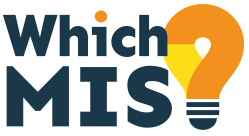We asked husband and wife team, Nick and Sarah Finnemore of Finnemore Consulting, to let us know their takeaways from 2022 – and what 2023 might have in store for us…
The MIS sector in England continues to be in a state of flux and there are currently no signs of it settling down. Schools and MATs continue to switch suppliers, businesses and support teams are changing the way they operate, and new partnerships and being formed to enhance the value suppliers offer.
Is this a good thing for schools and MIS users? We certainly hope so, with change comes innovation, but we can see why MIS can feel like a pain in the backside as opposed to an opportunity to improve things for some schools and MATs.
Here are some of the big talking points in 2022 and our predictions for 2023:
ESS require schools to move to a direct licencing model and 3-year minimum contract
When ESS announced to all its schools that they required them to licence with them directly (as opposed to via an LA licence deal) and that all contracts would be for 3-years now as opposed to one, there was a great deal of pushback from schools culminating in a challenge from them and a subsequent investigation by the CMA.
As a result, ESS, having offered various incremental ‘break clauses’ over the past 18 months, proposed a ‘New Break Clause Offer’ which allows some schools to apply to break their contract if they can provide ‘objective evidence of a clear intention to switch’.
Last month the CMA published its decision to accept commitments from ESS that enable certain schools (meaning those which had considered switching providers but concluded they did not have sufficient time to do so) to apply to an independent adjudicator for a 12-month break clause. They had one month to do this and, if granted, the clause will allow them to exit their current three-year contract with ESS and choose an alternative provider, should they so wish.
Our predictions: It’s good news that there was finally some clarity on the options available to SIMS schools and what they need to do if they wish to switch supplier.
Was the application process itself so complicated that it put schools off, and they simply chose to stick with what they’ve got? Possibly.
Has it made schools who were previously happy with SIMS evaluate the market as a whole based on the change in licence arrangements? Probably. We anticipate that SIMS schools will continue to test the market and switch to an alternate MIS when they identify a solution that suits their needs better.
What’s next for Support Teams?
The role and nature of school support teams continue to evolve. As an LA team, only offering support for one MIS option feels more and more precarious as the level of churn amongst schools, academies and trusts increases each year. However, by and large, MATs, schools and academies often still want to buy into local support – they still want to work with the colleagues with which they’ve built such great relationships. As a result, the number of support teams forming partnerships with MIS providers other than SIMS has increased drastically, and many now offer multi-MIS support. The progressive teams understand that the priority is helping their schools achieve their goals, and it’s something they plan to continue to do in the future – irrespective of the systems they use. They “support the process, not the product”.
Our predictions: unfortunately, those LA teams that only offer SIMS support to their schools are going to find it harder and harder in the future. LAs no longer hold a SIMS licence in perpetuity as was once the case as ESS mandates that all schools licence with them directly so LAs are no longer a route to a preferential SIMS licence deal. ESS is offering its own support contracts directly to SIMS schools at a favourable price so these teams may find that some of their schools won’t buy into their MIS SLAs at all. For many, it may mean there is no longer a viable business.
An increased focus on procurements
As indicated by the amount of churn, it’s clear there are likely to be more procurements underway than ever. Depending on the size of the school or trust, this can be a complex process involving stakeholders from across all areas of operations, teaching and leadership. At any one time, an MIS supplier will also be responding to multiple tenders so we’d definitely encourage the use of a framework such as G-cloud or Everything ICT. It helps the process run smoothly and helps guard against any legal challenges.
Our predictions: We anticipate school and MAT requirements becoming more high-level and strategic as it becomes clear what brand-new, cloud-based MIS can help them achieve. While lots of requirements have tended to focus on functionality (e.g., can you take a register, can you submit the census) these are things that all MIS can do. A decision which is made purely on basics and price rarely gets schools and Trusts what they need.
We’re starting to see Trusts ask more of MIS suppliers in terms of how they will help them meet their own overall strategy. For example:
- How will the MIS help them meet Carbon net zero targets by 2030?
- How will the MIS provide the insight on students we need to successfully run a national academy chain?
- How does the MIS help us allocate budget to staff resources accordingly based on effective pedagogy?
Being a straight admin/office tool is not enough anymore, Trusts are looking for software partners with long-term benefits.
The desire for cloud solutions continues
There has always been a strong case for a school to move all its systems to the cloud, and this was brought into sharp focus by the pandemic. Anytime, anywhere access became crucial as school staff were unable to gain physical access to buildings. Even when they could, many students were still attending school remotely so there had to be solutions in place to cope with remote learning – it caught a lot of people out and accelerated cloud strategy.
The argument around TCO (Total Cost of Ownership) is now more important than ever as, once again, schools find their budgets being shrunk so any way to save money has to be considered. Cloud solutions mean that schools don’t need to buy or house a server so there are all the associated power and air-con cost savings that go with it.
Carbon targets and a successful net zero strategy are also becoming a higher priority for schools as we head towards 2030, they want to waste as little energy as possible and the cloud helps them get there.
Our predictions: schools will of course want to move to the cloud where possible and all the MIS suppliers understand this. The fast-growing suppliers are cloud-based as you would expect, and ESS has a cloud strategy with its Next Gen solution planned for the future.
For schools and Trusts who find themselves with a client-based MIS for the foreseeable future, there are other options out there to help your cloud strategy. For example, suppliers can sometimes help with this directly, and some school support teams offer SIMS hosting so you no longer need to buy and maintain servers.
Partnerships, mergers and acquisitions
There has been a lot of acquisition activity around MIS in recent years and this continued in 2022 with RM announcing the sale of the division that includes the Integris MIS to The Key Group.
Suppliers of MIS-adjacent solutions have also continued to form fruitful partnerships as it becomes clear that there’s not a ‘one-size-fits-all’ solution for schools and Trusts, and flexibility is everything.
Our predictions: We’re seeing increased merger, acquisition and partnership activity amongst support teams. For example, it was recently announced that School ICT Services Ltd had been acquired by Oxfordshire-based provider of education ICT services, Turn IT On.
We anticipate more and more LA support teams working in partnership with each other in order to pool expertise and deliver valuable services to their schools.
So, all in all, an eventful year in the sector and we can see more change coming. What’s coming next in terms of innovation? Who’s out there redefining the role MIS plays in schools in the face of changing requirements? We’re looking forward to seeing what 2023 has in store!
Sarah & Nick Finnemore

